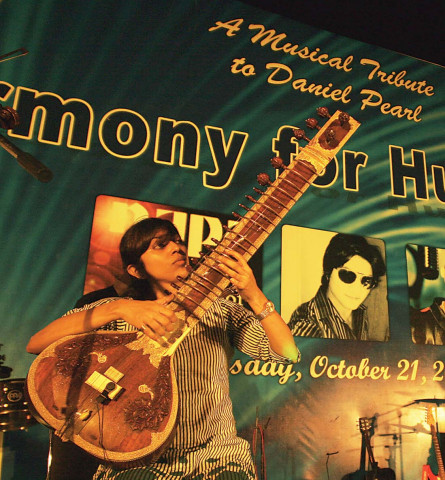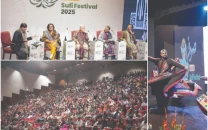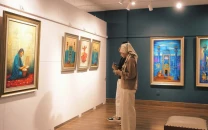The dying art of making a sitar
In a room at the academy that smells of sawdust and is scattered with wood, one gets to meet the ever busy Zafar Ali.

That brief description does not do the man’s work justice.
In a room at the academy that smells of sawdust and is scattered with wood, one gets to meet the ever busy Zafar Ali. One would assume that Ali plays the instrument but in reality, he is a sitar maker - or as he says “the only sitar maker in a population of some 20 million people.”
At the time of the interview, Ali is busy mending an instrument which he says “is at least 150 years old.”
“At one time this sitar was in the possession of Hameed Khan and Kabir Khan of Jaipur.”
Ali says, “I learnt how to maintain musical instruments and tools from my father who was also a sitar maker and carpenter.”
Ali mends only stringed instruments. “This is not a dwindling trade, it is a trade that has almost come to an end,” he tells The Express Tribune. Zafar Ali believes that, “People are still somewhat interested in listening to the sitar, but over all, there has been a significant decrease in sitar (players). Classical music is now an art form which is greatly appreciated in Europe but is no longer given any significance in the subcontinent.”
It takes almost two months, and costs somewhere between Rs20,000 to Rs30,000 to make a sitar.
“As far as Indian sitar-makers are concerned, the trade requires at least five craftsmen to make a single sitar, as one sitar is made out of five different pieces,” but Ali has acquired the knowledge of making a sitar independently.
Ali has been associated with Napa for the past five years. Prior to this, he owned a shop in Al Noor Society for about 22 years. “During those years nobody would send their young children to my shop to learn the trade of making a sitar, so today I am the only sitar maker left who can even mend instruments like the banjo, guitar, violin, dilruba, rabab and sarangi.”
The sitar is an instrument which has existed for hundreds of years. “Amir Khusro was the first one to have a sitar in his possession, it is said he is the founder of the instrument,” Ali said.
But the art of making and mending sitars is not one that will be carried on. Zafar Ali says, “Nobody apart from me is interested in making the sitar; hence this trade and art form will soon die down.”
Indian sitars are generally preferred over those made in Pakistan but Ali says, “Pakistan has produced some of the greatest sitar players like Ustad Rais Khan and Nafees Ahmed. If we don’t look after this art, it will soon die in the same way players of dilruba and sarangi have. One can no longer hear these instruments being played in Pakistan.”
Published in The Express Tribune, November 20th, 2010.



















COMMENTS
Comments are moderated and generally will be posted if they are on-topic and not abusive.
For more information, please see our Comments FAQ